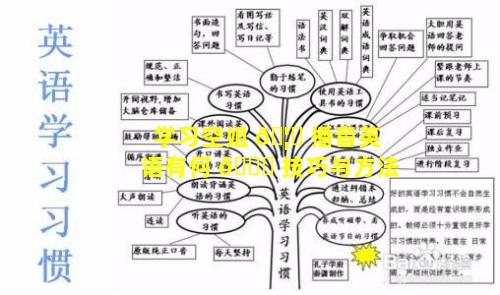怎样借助喝茶来学好地道的茶英语
- 作者: 胡星葵
- 来源: 投稿
- 2024-10-01
1、怎样借助喝茶来学好地道的茶英语
借助喝茶学习地道的茶英语
1. 沉浸式体验:
参加茶会或茶艺课程,亲身体验茶文化。
与当地茶农或茶艺师交流,了解不同的茶叶和冲泡方式。
2. 泡茶与品茶术语:
学习茶具的名称(茶壶、茶杯、茶漏等)。
掌握泡茶过程中的步骤(温杯、投茶、冲泡、出汤)。
了解茶叶的种类、香气和口感。
3. 关注茶叶产地:
了解不同产区的茶叶特点(如云南普洱、福建乌龙、西湖龙井)。
学习产地相关的英语词汇(hilltop valleying、elevated altitudes)。
4. 文化交流:向茶艺师和茶馆老板询问当地茶文化和习俗。
了解茶在社交场合中的作用(礼节、待客)。
5. 阅读和观看相关资料:
阅读英语茶书和文章,深入了解茶的历史、工艺和文化。
观看纪录片或视频,学习茶叶制作过程和冲泡技巧。
6. 与其他学习者交流:
加入在线茶社群或论坛,与来自世界各地的茶爱好者交流。
与茶友分享心得体会,提升英语表达能力。
7. 品茶日记:养成写品茶日记的习惯,记录不同的茶叶体验。
使用英语描述茶叶的外观、香气、口感和回味。
8. 参与茶相关活动:
参加茶艺比赛或茶文化活动,提升对茶英语的理解和使用。
与其他茶文化爱好者交流,学习地道的茶英语表达。
9. 持续练习:定期喝茶并使用相关的英语词汇。
找机会与说英语的人讨论茶文化。
10. 保持热情:
对茶文化和英语学习充满热情,坚持不懈地实践。
将学到的茶英语知识融入日常生活中,自然而然地提高英语水平。
2、怎样借助喝茶来学好地道的茶英语翻译
通过喝茶学习正宗茶英语翻译的指南
1. 选择有指导的茶样品鉴活动:
参加有茶艺师指导的品鉴会,在品尝不同茶叶的同时了解它们的英语名称、特性和风味。
2. 阅读茶叶包装和产品说明:
仔细阅读茶叶包装上的说明,了解茶叶的产地、类型、冲泡方法和风味描述。
3. 探索茶文化相关书籍和网站:
阅读关于茶历史、类型、品尝和鉴赏的书籍和文章。在线网站,如Tea Masters of America,提供全面的茶英语术语资源。
4. 使用茶英汉对照词典:
随身携带或在线使用茶英汉对照词典,随时查询不熟悉的词汇和短语。
5. 与茶友交流:
加入茶友会或在线论坛,与其他茶爱好者交流。讨论不同茶叶、冲泡技术和英语翻译。
6. 练习描述茶叶风味:
定期品茶并训练自己使用英语准确描述风味特征,例如花香、水果味、泥土味和苦味。
7. 翻译茶相关文本:
翻译茶叶包装说明、品鉴笔记和茶文化文章,以实践语言技能并扩大词汇量。
8. 参加茶英语翻译竞赛:
有组织举办的茶英语翻译竞赛可以提供一个有激励性和竞争性的学习环境。
9. 获得专业认证:
考虑获得专业茶翻译认证,例如美国茶协会的 Certified Tea Sommelier®。这可以提高你的信誉并扩大你的职业选择。
10. 不断练习:
像学习任何语言一样,提高茶英语翻译水平的最好方法就是持续的练习。定期喝茶,并不断扩展你的茶英语词汇和知识。

3、如何沏茶品茶英语作文
How to Brew and Enjoy Tea
Tea, a quintessential beverage enjoyed across cultures, has captivated tea enthusiasts with its exquisite flavors, soothing aromas, and purported health benefits. Brewing and savoring tea involves a delicate art, requiring careful attention to each step to fully appreciate its nuances.
Brewing Tea
1. Select Loose Leaf Tea: Opt for highquality loose leaf tea to extract the purest flavors. Avoid using tea bags, as they restrict the leaves' expansion and limit their ability to fully infuse.
2. Preheat the Teapot: Warm the teapot by rinsing it with hot water. This prevents the tea from cooling too quickly and allows for optimal extraction.
3. Measure the Tea: Use approximately 2 grams of tea per cup of water (8 ounces). For stronger tea, increase the amount to 3 grams per cup.
4. Add Hot Water: Bring water to between 175°F (79°C) and 212°F (100°C) depending on the type of tea. Pour hot water over the tea leaves and let them steep.
5. Steeping Time: The optimal steeping time varies depending on the type of tea. Green teas typically require 23 minutes, while black teas can steep for 45 minutes. Use a timer to ensure precise infusion.
6. Strain the Tea: After steeping, strain the tea into a separate vessel to prevent overextraction. Alternatively, use a tea infuser basket to remove the leaves from the teapot.
Savoring Tea
1. Serve in Warm Cups: Pour the brewed tea into preheated cups to maintain its warmth and aroma.
2. Observe the Color and Clarity: Hold the cup up to the light to admire the tea's color and clarity. Quality teas will exhibit a vibrant hue and transparent appearance.
3. Inhale the Aroma: Take a deep breath and inhale the intoxicating aroma of the tea. Savor the delicate notes of fruit, flowers, or spices.
4. Take a Sip: Allow the tea to cool slightly before taking a sip. Let the flavors wash over your palate, noticing the complexity and balance of the brew.
5. Mindful Appreciation: Sip the tea slowly, paying attention to the subtle changes in flavor as it cools. Reflect on the taste, texture, and overall experience.
6. Relax and Unwind: Enjoy the calming effects of tea as you unwind and appreciate the present moment. Let its soothing presence soothe your mind and body.
By following these steps, you can unlock the full potential of tea and embark on a journey of sensory exploration. Whether you prefer the refreshing notes of green tea, the robust flavors of black tea, or the delicate fragrances of herbal infusions, there is a perfect tea to cater to your palate.
4、喝茶怎么样翻译成英语
How about a cup of tea?




